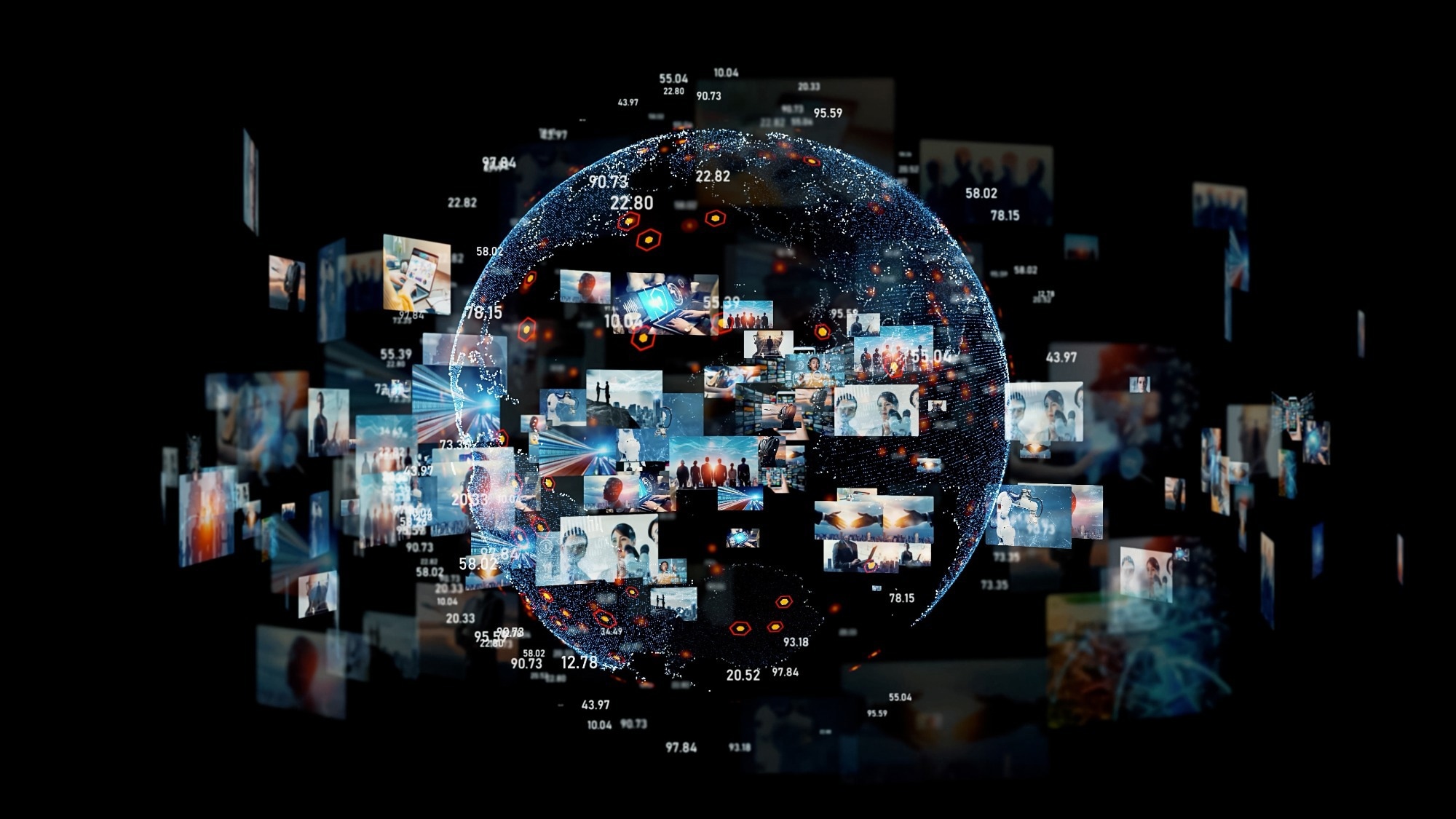Introduction
Defining digital or secondary trauma
Scientific evidence of psychological effects
Who is most at risk?
Mechanisms of impact
Coping strategies and interventions
Future directions and research needs
Conclusions
References
Further reading
As digital platforms blur public and private boundaries, mounting evidence reveals how unfiltered exposure to distressing online content fuels a silent mental health crisis, especially among youth, while emerging interventions offer hope for building resilience in an always-connected world.
 Image Credit: metamorworks / Shutterstock.com
Image Credit: metamorworks / Shutterstock.com
Introduction
The constant use of social media platforms makes young users more exposed to emotionally disturbing and often suffering graphic images, videos of violence, cyberbullying, and discussions about self-harm or suicide. Unlike traditional media, this exposure is frequent, personalized, and unfiltered, which magnifies the emotional vulnerability of users.
As smartphones blur the boundaries between private and public experiences, the mental health implications of repeated exposure to traumatic content online are becoming a growing concern that demands urgent attention from healthcare professionals, educators, and policymakers.1 This article explores how repeated exposure to distressing content on smartphones causes secondary trauma, its effects, and science-backed coping strategies.
Defining digital or secondary trauma
Secondary traumatic stress (STS) refers to the emotional and psychological distress that arises from indirect exposure to trauma. STS is typically observed in individuals who witness or engage empathetically with the suffering of others.
Vicarious trauma, a related concept, involves more profound and more lasting changes in one’s emotional and cognitive worldview due to repeated secondary exposure. Whereas direct trauma involves experiencing a traumatic situation for the first time, STS develops through exposure to the traumatic experiences of others.2
Digital platforms amplify the reach and intensity of secondary trauma through widespread sharing of images, videos, and stories related to violence, as well as loss and disasters, without any filters and warnings. This regular exposure can increase the risk of anxiety, intrusive thoughts, and emotional numbing.
Although the Diagnostic and Statistical Manual of Mental Disorders, Fifth Edition (DSM-5) excludes digital exposure from post-traumatic stress disorder (PTSD), STS remains a major concern for digital-age mental health.2
Scientific evidence of psychological effects
Several studies have confirmed that individuals, especially youth, frequently exposed to disturbing images or videos online may develop anxiety, depression, sleep disturbances, intrusive thoughts, or symptoms resembling PTSD. Viewing graphic content activates the brain’s amygdala and stress-response systems, which subsequently increases hypervigilance, emotional numbing, and dysregulation. These effects can persist, even when the individual is no longer in danger, especially if they lack strong social support or coping skills.3
“Doomscrolling," which refers to the compulsive consumption of distressing news or media, rose to prominence during the coronavirus disease 2019 (COVID-19) pandemic. This type of prolonged exposure to online trauma can significantly worsen mental health and life satisfaction.
Doomscrolling evokes greater levels of existential anxiety – a feeling of dread or panic that arises when we confront the limitations of our existence.”
Importantly, not all responses to digital trauma result in diagnosable disorders, as many individuals experience subclinical symptoms like avoidance, emotional detachment, or cognitive distortions that affect daily functioning. Understanding these reactions is essential for developing digital well-being strategies and trauma-informed support systems, especially for populations that rely heavily on online content for information and social interaction.3
 Image Credit: Bits and Splits / Shutterstock.com
Image Credit: Bits and Splits / Shutterstock.com
Who is most at risk?
Young people are particularly at risk due to psychological distress caused by digital or secondary trauma due to their ongoing brain development, increased emotional sensitivity, and high exposure to social media. Constant users of social platforms are more likely to encounter disturbing images, online harassment, or peer comparison, which can trigger anxiety, depression, and low self-esteem. Journalists, especially those reporting on conflict or disasters, and first responders who regularly witness trauma, are also susceptible to STS and burnout.4
Individual susceptibility to STS varies based on age, personal history of trauma, and psychological resilience. Those with past traumatic experiences, limited coping ability, or low social support are more likely to be affected by indirect trauma exposure.
For example, a study developing the Psychopathological Vulnerability Index (PVI) found that youth with higher PVI scores were significantly more likely to experience anxiety, depression, and burnout. This underscores the importance of early screening, as early adulthood marks a peak period of vulnerability for mental health disorders. Identifying and supporting high-risk populations with tailored interventions and digital literacy education can help reduce the burden of secondary trauma in the digital age.4
Mechanisms of impact
When individuals regularly view distressing content, such as violent videos or graphic images, the hypothalamic-pituitary-adrenal (HPA) axis within the brain may become dysregulated. This stress pathway, which normally regulates cortisol production, can become hypersensitive. As a result, individuals may experience heightened arousal, intrusive thoughts, and impaired memory extinction, all of which resemble symptoms of PTSD.5
Behavioral science provides more insight into “doomscrolling,” a pattern that is a product of uncertainty, perceived threats, and a psychological bias toward detecting danger. Users seek more information in an attempt to regain control, which paradoxically increases distress.5
Social media algorithms amplify the cycle of users seeking more information in an attempt to regain control and maximize engagement, often involving the promotion of emotionally charged or fear-inducing posts. Without content moderation, users are exposed to repeated traumatic material, especially during crises, thereby increasing the risk of emotional fatigue and reduced psychological resilience.
Together, these biological, behavioral, and technological mechanisms explain how digital environments can intensify trauma and hinder recovery.5
Coping strategies and interventions
Numerous evidence-based coping strategies have become increasingly popular among individuals to reduce digital exposure and improve their mental health. A digital detox, for example, involves a conscious reduction or temporary abstinence from digital platforms.
Digital detox interventions have been shown to significantly reduce depressive symptoms; however, their effects on stress, life satisfaction, and overall mental well-being were not statistically significant. Thus, although detox may increase certain psychological burdens, complex emotional outcomes likely require more holistic approaches.6
Other effective interventions include mindfulness practices and cognitive-behavioral techniques that help individuals regulate their emotional responses and develop healthier digital habits. Behavioral therapy can also address compulsive scrolling, negative thought patterns, and digital dependency, whereas mindfulness fosters intentional, present-moment awareness.6
App-based features, such as content warnings, screen time limits, and usage trackers, also empower users to manage their exposure and make informed choices. Platforms that incorporate these features can help moderate the psychological impact of distressing content.6
Scientific literacy, which is the ability to understand digital health risks and assess credible sources, is equally important. Promoting awareness about how algorithms personalize content and reinforce engagement loops is crucial for empowering individuals to build resilience and reclaim control over their digital experiences.6
6 Signs It's Not Anxiety, It's Secondary Trauma
Future directions and research needs
Emerging technologies are playing an increasingly critical role in identifying and mitigating the psychological effects of harmful digital content. Tools like artificial intelligence-based content filters, emotion-recognition algorithms, and digital mental health apps offer promising pathways to detect distress signals and provide personalized interventions. These innovations have the potential to make digital environments more responsive and supportive, particularly for users at a greater risk of trauma-related symptoms.7
Despite these advances, significant gaps remain in current research, as most studies to date are cross-sectional, providing only a snapshot of user experiences without capturing the long-term effects of repeated exposure. Thus, longitudinal research is urgently needed to better understand the enduring impact of digital trauma on mental health and cognitive function across diverse populations.7
Ethical and policy considerations must be prioritized. Digital platforms have a growing responsibility to implement safeguards guided by transparent algorithms, user-centered design, and regulatory frameworks, thereby protecting both mental health and digital rights.7
Conclusions
Digital trauma is increasingly recognized as a serious public health concern in the digital age, particularly among youth and heavy social media users. As science uncovers the psychological and neurobiological effects of repeated exposure to distressing content, there remains an urgent need for evidence-based interventions.
Strategies such as digital detox, mindfulness, app-based content controls, and digital literacy are essential tools for resilience. However, addressing this challenge requires continued interdisciplinary collaboration between mental health professionals, researchers, and technology developers.
Through these efforts, we can create safer digital spaces and ensure that innovation supports, rather than harms, psychological well-being.
References
- Abi-Jaoude, E., Naylor, K. T., & Pignatiello, A. (2020). Smartphones, social media use and youth mental health. Cmaj, 192(6), E136-E141. DOI: 10.1503/cmaj.190434, https://www.cmaj.ca/content/192/6/e136
- Gökçen, O., Karataş, K. S., Akkuş, M., Dönmez, F., Aydoğan, Ç., & Aydoğan, E. (2024). Secondary Traumatic Stress Symptoms in Social Media Users after the February 6, Kahramanmaraş Türkiye Earthquakes: The Relationship with Social Media Addiction, Depression, Anxiety and Stress Symptom Levels. Turkish Journal of Psychiatry, 35(4), 263. DOI: 10.5080/u27483, https://turkpsikiyatri.com/submission/MakaleKontrol?Id=VFdwak1FOUVUVDA9
- Center for Substance Abuse Treatment. (2014). Understanding the impact of trauma. In Trauma-informed care in behavioral health services. Substance Abuse and Mental Health Services Administration (US). https://www.ncbi.nlm.nih.gov/books/NBK207191/
- Liao, Y., Shen, H., Duan, W., Cui, S., Zheng, C., Liu, R., & Jia, Y. (2024). Development of the psychopathological vulnerability index for screening at-risk youths: a Rasch model approach. npj Mental Health Research, 3(1), 1-16, DOI:10.1038/s44184-024-00106-6, https://www.nature.com/articles/s44184-024-00106-6
- Sherin, J. E., & Nemeroff, C. B. (2011). Post-traumatic stress disorder: the neurobiological impact of psychological trauma. Dialogues in clinical neuroscience, 13(3), 263-278. DOI: 10.31887/DCNS.2011.13.2/jsherin, https://www.tandfonline.com/doi/full/10.31887/DCNS.2011.13.2/jsherin
- Ramadhan, R.N., Rampengan, D.D., Yumnanisha, D.A., Setiono, S.B., Tjandra, K.C., Ariyanto, M.V., Idrisov, B. and Empitu, M.A., 2024. Impacts of digital social media detox for mental health: A systematic review and meta-analysis. Narra J, 4(2), e786. DOI:10.52225/narra.v4i2.786, https://narraj.org/main/article/view/786
- Dwivedi, Y.K., Ismagilova, E., Hughes, D.L., Carlson, J., Filieri, R., Jacobson, J., Jain, V., Karjaluoto, H., Kefi, H., Krishen, A.S. and Kumar, V., 2021. Setting the future of digital and social media marketing research: Perspectives and research propositions. International journal of information management, 59, 102168.DOI:10.1016/j.ijinfomgt.2020.102168, https://www.sciencedirect.com/science/article/pii/S0268401220308082
Further Reading
Last Updated: Jun 24, 2025